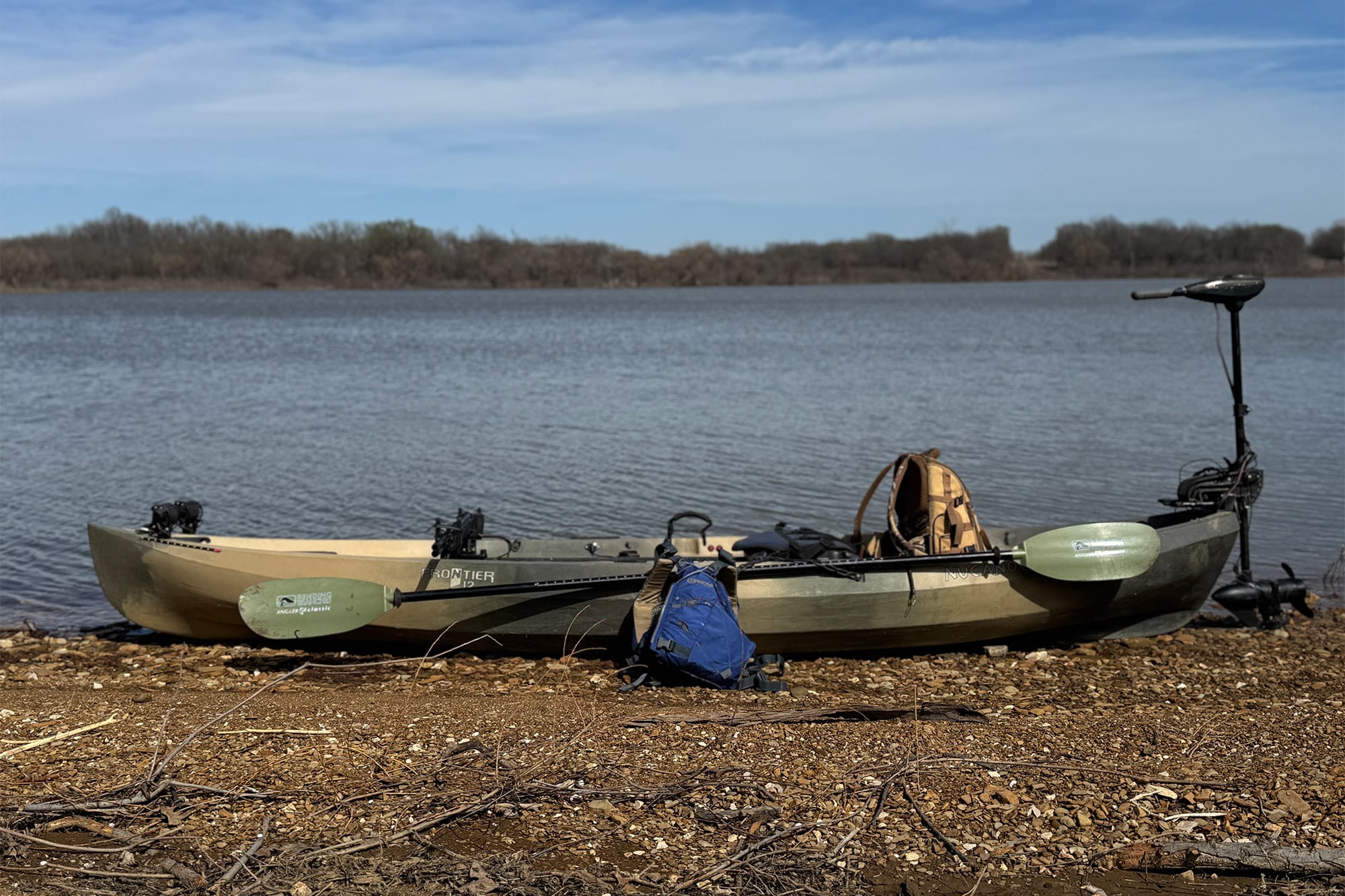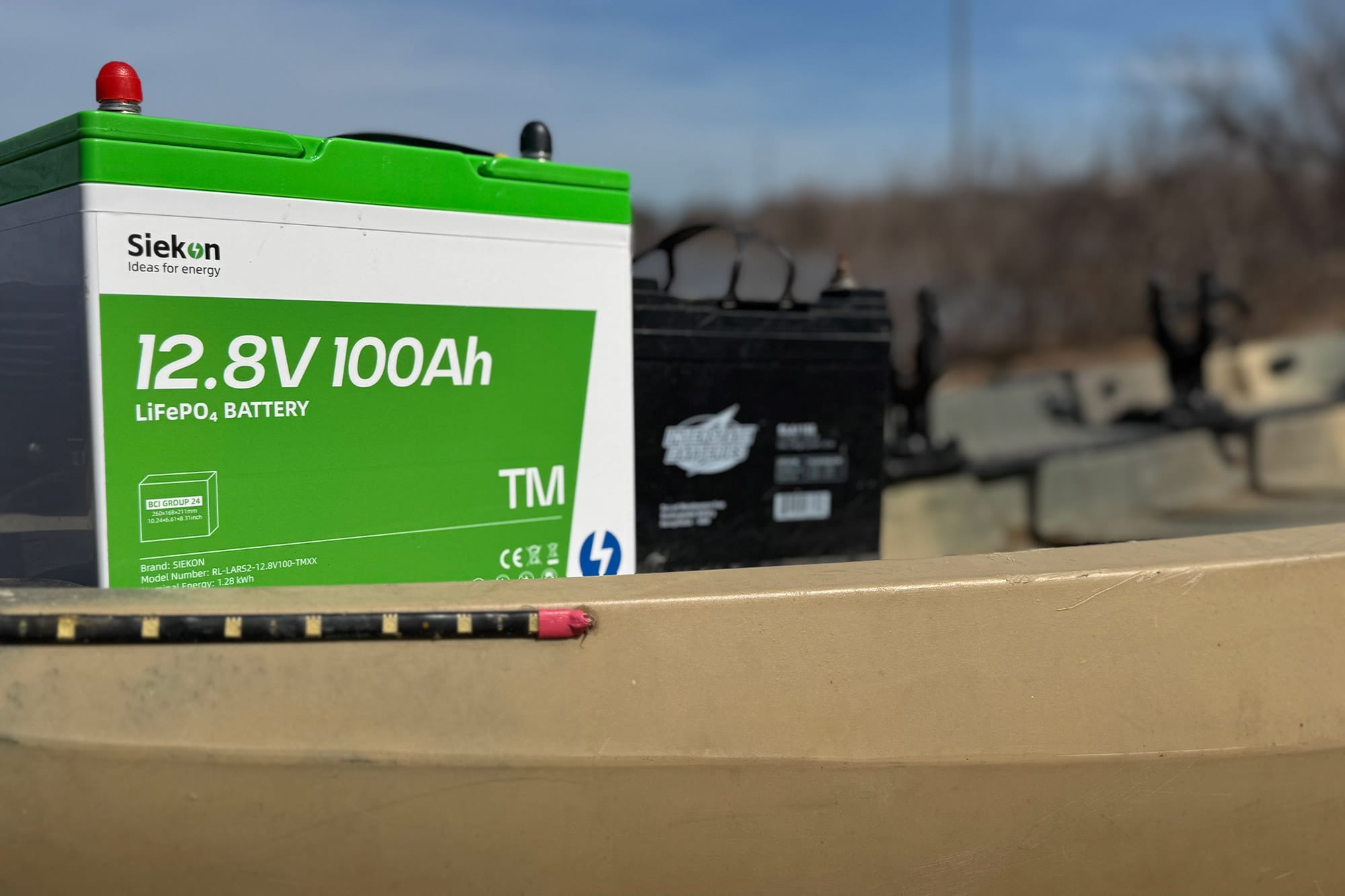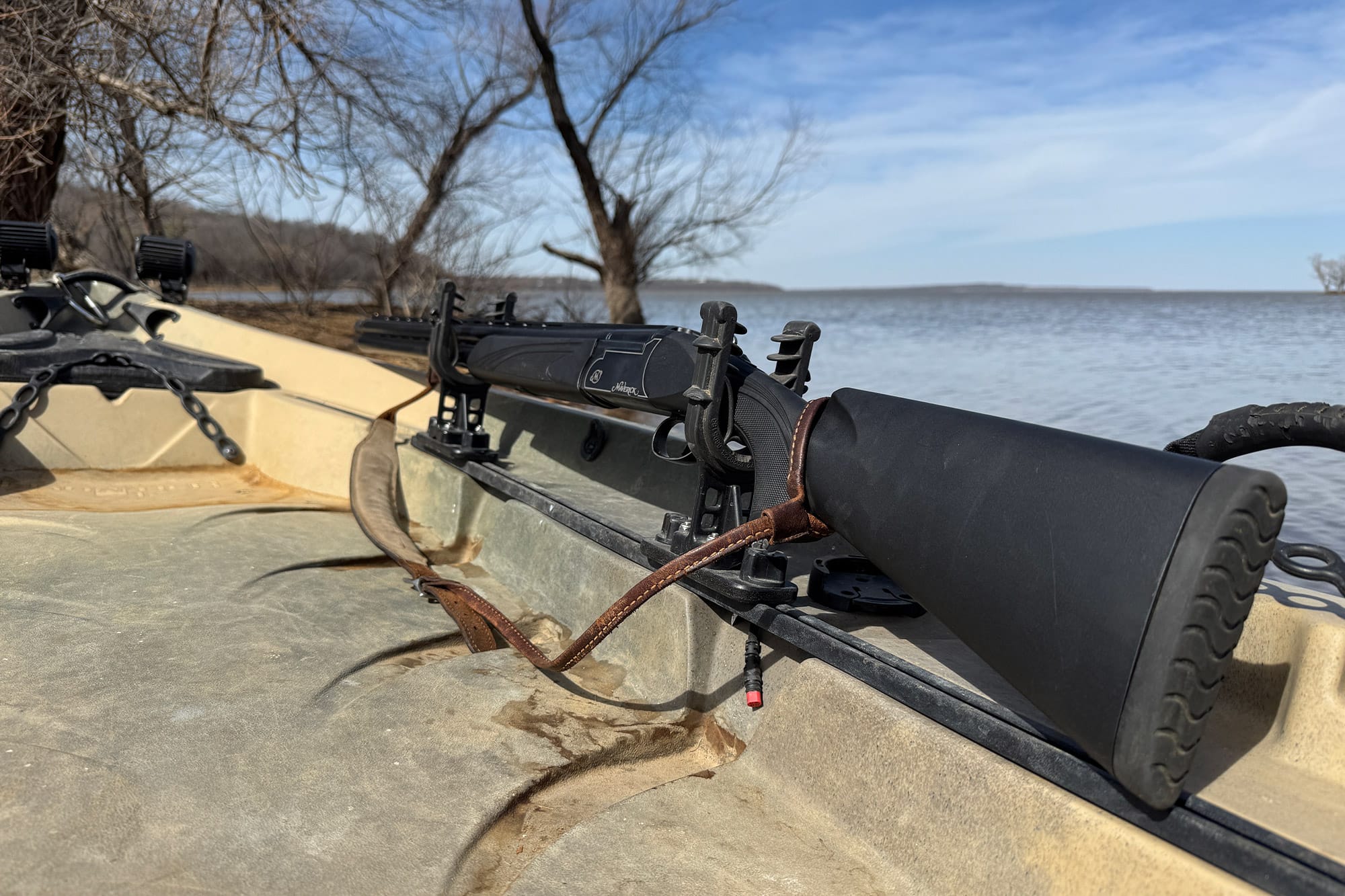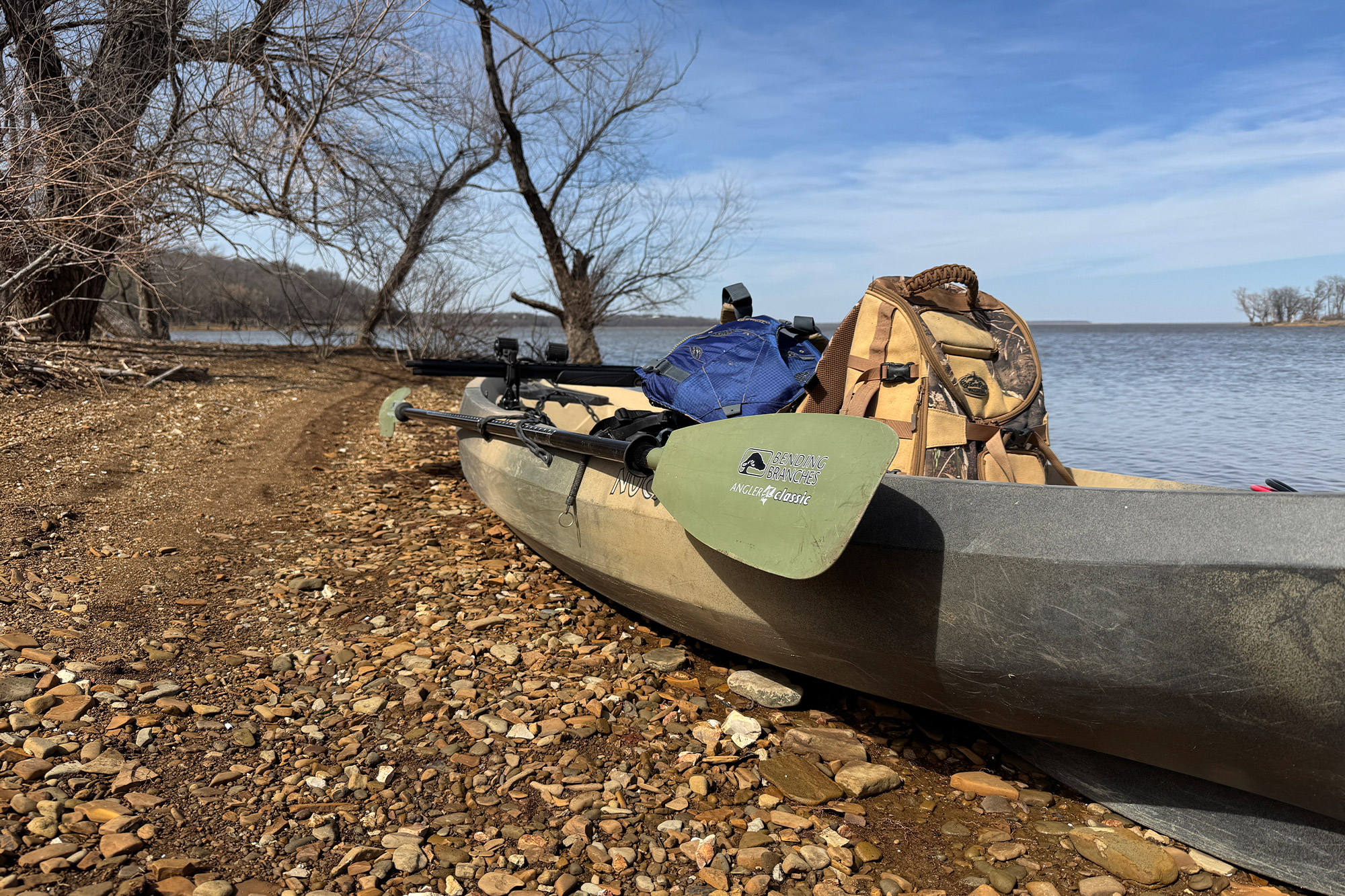Most turkey hunters overlook one of the best tools they can carry into the season: a kayak. Rig it right, and it becomes your silent hunting partner—slipping you into untouched spots, sneaking you closer to wary gobblers, and helping you outpace the competition. A well-thought-out kayak setup doesn’t just raise your odds of success; it changes the way you hunt turkeys altogether.
My lightbulb moment came one spring morning when I spooked a whole roost with the noise from my boat motor. Even after switching to a trolling motor, the birds were already gone. That frustrating hunt drove home a simple truth—stealth on the water is every bit as important as stealth in the woods.
It took a few more seasons of trial and error to get my kayak dialed in. But now, with the right rigging, gear, and strategy, I can slip in quieter, get closer, and punch tags more consistently. To help you skip the headaches I went through, here are the key kayak rigging tips that’ll put you on gobblers faster this spring.
Looking for a new ride to chase both game and fish? Don’t miss our guide to the best kayaks of the year.
How to Rig Your Turkey Hunting Kayak

When it comes to rigging a kayak, I stick to the KISS method—Keep It Stupid Simple. Don’t get me wrong, I love gear as much as the next hunter, but every time I try to load my kayak down with too much stuff, I end up frustrated and miserable.
Through trial and error, I’ve learned that staying light and agile pays off, especially during spring or fall turkey hunts. If you take away just one thing, let it be this: only pack what you truly need for the woods.
The Gear

If you already own a kayak, chances are you’ve got most of what you’ll need for a successful hunt. For those starting from scratch, I suggest a 10-foot fishing kayak in the $1,000–$1,500 range. There aren’t kayaks built specifically for hunting—at least not yet—but a solid fishing model works just fine.
Below, I’ve listed the kayak gear I rely on when chasing old Tom. This doesn’t include my actual turkey hunting setup—just the essentials I use to rig the kayak itself.
- PFD
- Paddle
- Trolling motor
- Lithium-ion battery
- Shotgun and bow mounts
- Navigation lights
- LED lights
How to Set Up Your Kayak for Success

Now that you’ve got the gear, the next step is getting it set up in the right spots on your yak.
One thing you absolutely can’t overlook is a PFD—and not just having it onboard, but actually wearing it. Paddlers make up the highest percentage of boating fatalities, and most of those come down to not wearing a life jacket. Don’t end up as part of that statistic.
Personally, I run the Astral V-Eight Fisher PFD. It’s comfortable, breathable, and doubles as my go-to kayak fishing vest, which makes it a solid all-around choice.
Mount a Kayak Motor & Battery

Next up—always bring a paddle. Even if you’re running a motor or a pedal drive, things can break, and you’ll be glad you’ve got a backup. Motors are handy when you’ve got a long haul, but for shorter trips, they can be more hassle than help.
For a while, I ran a noisy 5-horsepower surface drive on my NuCanoe F12 because it was faster than my Minn Kota Endura trolling motor. But eventually, I switched back to the trolling motor. It’s lighter, easier to manage, and most importantly—quiet. When you’re slipping into turkey country, silence matters.
And speaking of motors, the battery makes a big difference. In my book, lithium-ion is the only way to go for kayaks. They’re lighter, pack more power, and beat out lead-acid batteries of the same size every time.
I mounted my trolling motor on the stern (rear) of the kayak and set the battery up front in the bow. That weight balance keeps the kayak steady, and by running the wires through the hull, I keep the deck clear and uncluttered.
Install Some Lights

Putting the battery up in the bow also made it easier to hook up my navigation and LED lights since I didn’t have to run as many wires. You’ll only need those lights if you’re planning to be on the water before daylight or after dark—like slipping into your spot before sunup or hanging around until sundown.
Don’t Forget About the Gun Mounts

One piece of gear I wouldn’t skip is a shotgun or bow mount. I’ve been running the YakAttack Gun Mounts, but since they’ve been discontinued, I’d suggest the Railblaza GunHold as a solid alternative. What I like about these mounts is that they lock your gun or bow securely in place, yet keep it within easy reach when it’s time to grab and go.
I keep my shotgun mounted on the right side of the kayak, running parallel. That setup keeps my deck clear for other gear but still lets me grab the shotgun fast if I hear a gobble. You can mount it perpendicular across the kayak, but in my experience, it just gets in the way more than it helps.
Final Thoughts

If you’ve got navigable water nearby, a kayak is one of the best tools you can use for chasing early- or late-season turkeys. Sliding silently across the water lets you slip in close to birds that would never expect danger coming from the shoreline.
A kayak also opens up new ground by extending your reach well beyond what’s accessible on foot or by truck. Hidden coves, remote bends, and overlooked stretches of shoreline suddenly become huntable spots that most folks will never touch.
On top of that, the portability and maneuverability of a kayak make it easy to adjust on the fly. If birds aren’t talking or conditions shift, you can move quickly without much hassle.
At the end of the day, hunting from a kayak gives you stealth, flexibility, and the element of surprise—all the things that help you get closer, faster, and tag turkeys that other hunters never even knew were there.
FAQ’s
What is the best weapon for turkey hunting?
For most hunters the shotgun is the go-to: it’s forgiving, fast to aim at close range, and gives you a much higher chance of a clean, ethical kill when a tom walks into range. Bows are fantastic if you want a greater challenge or quieter approach, but they demand more skill and closer shots. Choose a tool you practice with and that fits the terrain and distances you expect to shoot. :contentReference[oaicite:0]{index=0}
What not to do when turkey hunting?
Don’t move or snap your head if a bird is set up and watching — turkeys pick up motion fast. Don’t overcall or spam calls; realistic timing and pauses win more birds. Never take a shot beyond your ethical effective range, and always positively identify your target (and what’s beyond it). Lastly, don’t forget to check local regs and wear required blaze or safety gear when required.
What are the best shoes for turkey hunting?
Pick waterproof, quiet boots with good ankle support and a grippy sole. In spring you want breathability plus traction for muddy slopes; in late-season hunts, insulated, waterproof boots are better. Many turkey hunters prefer a lightweight waterproof hiking boot or a mid-height insulated hunting boot — comfort for hours of calling and short stalks matters more than style.
What’s the hardest turkey to hunt?
Longbeards in big, rugged public-land areas are often the toughest — mature toms that feed and move in thick cover or across large, hunted landscapes can be very wary. Wild, old-tom birds with lots of hunting pressure are generally the most challenging.
What size shot is best for turkey hunting?
Most turkey hunters choose #4, #5, or #6 lead shot (or TSS/tungsten alternatives) depending on range and choke. #5 is a common, effective compromise for 20–40 yards in a 12-gauge 3″ load; TSS or other heavy shot options are preferred if you expect longer-range shots or want denser patterns. Always pattern your gun+load combo to know what works. :contentReference[oaicite:1]{index=1}
Is a gun legal in Turkey?
Turkey regulates civilian firearm ownership strictly: civilians must obtain permits and meet medical, background, and administrative requirements for possession and carrying. The rules distinguish types of firearms, and illegal possession carries penalties — if you’re thinking about owning or carrying a firearm in Turkey, check the official Turkish police/gendarmerie rules or consult a local attorney because the process and allowances differ from many other countries. :contentReference[oaicite:2]{index=2}
What colors not to wear while turkey hunting?
Avoid bright colors that scream “human” — white, bright reds, or flashy patterns can spook birds. Don’t wear loud camouflage patterns with big high-contrast prints near your face. In many states you must wear hunter-orange during certain seasons or when walking to/from your set; follow local regulations before choosing colors.
Should I take binoculars for turkey hunting?
Yes — a small, compact pair (6x or 8x) is very helpful for glassing roosts at first light or checking birds at distance. Binoculars help you locate birds, spot other hunters, and decide where to set up before calling.
What is the best terrain for turkey hunting?
Mixed-wood edges, fields with nearby roosting timber, river bottoms, and areas with mast or insect food in spring are excellent. Turkeys like a mix of open feeding areas and close cover, so look for travel lanes between roost and feed, and set up where you can intercept birds without obvious movement.
How many people own guns in Turkey?
Estimates vary by source and include both registered and unregistered firearms. Broad international surveys (Small Arms Survey) have placed Turkey in the low-to-mid range of civilian firearms per 100 people compared with other nations, and recent reporting suggests civilian ownership has been rising; exact counts change over time, so consult the latest Small Arms Survey or national statistics for precise figures. :contentReference[oaicite:3]{index=3}
Is it legal to carry a knife in Turkey?
Knife laws in Turkey are stricter than many countries: small utility knives for everyday tasks are commonly tolerated, but carrying large fixed blades, locking folders, or knives with obvious offensive designs can be illegal or lead to problems — and using a knife for defense is not a legal justification. If you need to carry a blade while traveling, keep it small, non-locking, and check local rules first. :contentReference[oaicite:4]{index=4}
Does Turkey make quality firearms?
Yes — Turkey has a mature domestic firearms industry producing hunting, sporting, and military-style weapons. Several Turkish manufacturers export shotguns, handguns, and parts worldwide, and some models are well-regarded for value and durability. As with any country, quality varies by maker and model, so research brands and read user reviews before buying.
What is the most armed country in the world?
By civilian guns per capita, the United States ranks highest in most global estimates. Different studies and years shift rankings slightly, but large-scale surveys like Small Arms Survey consistently put the U.S. at the top for civilian-held firearms per 100 people. :contentReference[oaicite:5]{index=5}
Do Swiss citizens have guns?
Yes — Switzerland historically has high civilian gun ownership tied to its militia system. Many Swiss men historically kept military rifles at home as part of national defense practices, though laws and practices have evolved and there are regulations on storage, permits, and transfers. Swiss gun ownership is well documented and regulated.
When did Turkey get guns?
Firearms in the region date back centuries as firearms spread through the Ottoman Empire and into the modern Republic of Turkey. Modern civilian and military firearms became widespread with industrialization and the 19th–20th century evolution of small arms; the specifics depend on whether you’re asking about early handguns, muskets, or modern rifles.
Where to aim while turkey hunting?
Aim for the head/neck area for the cleanest, quickest kills — that’s the ethical target for shotguns. Body shots can work at very close range but risk heavy meat damage and less reliable lethality. With a bow, aim for the vitals (front-center of the body) where arrow penetration will reach the lungs/heart.
How to keep a turkey from attacking you?
Turkey attacks are rare. If a bird gets aggressive (usually a gobbler during breeding season), don’t run — stand your ground, make yourself look bigger, and slowly back away if you can. Avoid cornering an aggressive bird; if necessary, use a tree, vehicle, or other barrier to get distance. Most “attacks” are bluff charges and will stop if you remain calm.
Can you wear jeans turkey hunting?
Yes — jeans are fine for many turkey hunts, especially in spring. They’re quiet enough for many situations, but consider quieter, more flexible hunting pants if moving a lot or glassing rough terrain. In wet or very cold conditions, waterproof or insulated pants are better.
What is the best bullet for turkey hunting?
If you’re using a shotgun, “bullet” isn’t the right term — choose the proper shot (TSS, #4–#6 lead or plated options) matched to choke and distance. If rifles are allowed where you hunt, small, fast rounds that minimize meat damage but deliver reliable lethality (.223, .17, .22 variants in places that allow rifles) are commonly used — but always check regulations first.
Is it better to use a red dot or scope for turkey?
For close-to-medium turkey shots, a red dot is often better — it’s faster to acquire and very intuitive; many hunters use a low-power scope or a red dot depending on personal preference and typical engagement distances. Try both on the range and see what you shoot best with.
Can I use a rifle for turkey?
That depends entirely on jurisdiction. Many states and regions either prohibit rifles for spring turkey season or restrict calibers and seasons. Some states allow rifles in specific seasons or zones. Always check your local hunting regulations before assuming rifles are legal.
Can I bring a gun to Turkey?
Bringing firearms into Turkey as a traveler is tightly regulated and often requires advance permits, documentation, and compliance with customs and Turkish law. Many countries’ travelers find it simpler to rent or arrange firearms locally through licensed outfitters. If you plan to travel with a firearm, contact the Turkish consulate and arrange the required legal paperwork well in advance.
What caliber is good for turkey?
For shotguns, 12-gauge (3″ or 3.5″) is the industry standard and most versatile; 20-gauge works well for lighter recoil and shorter-range shots. If rifles are allowed where you hunt, small, high-velocity rounds that produce controlled penetration are common—again, check local rules and test your setups on the pattern board to confirm effectiveness.
Read more: 10 Types of Turkey (Identification Guide, With Pictures)
